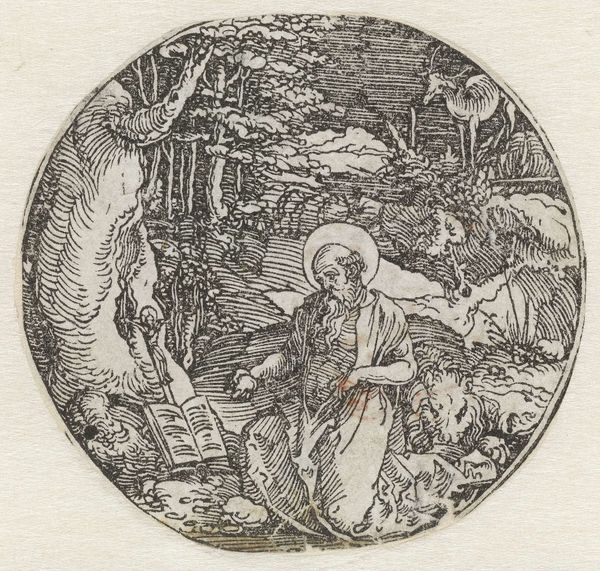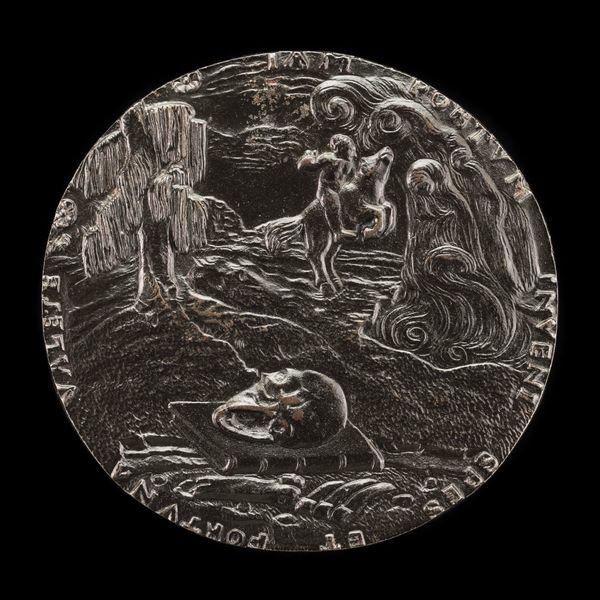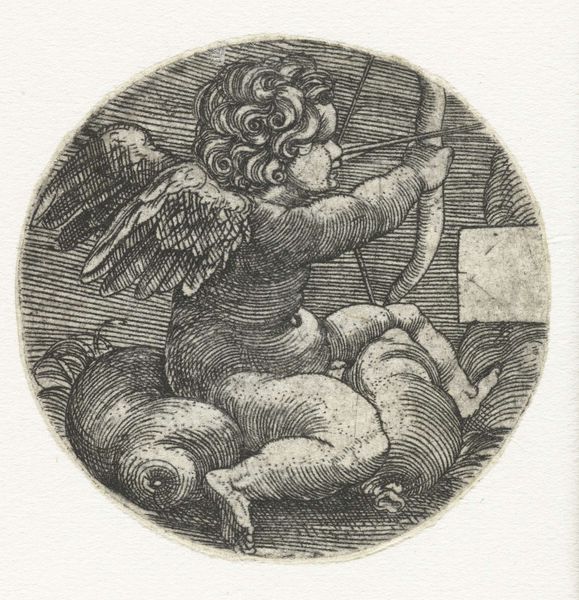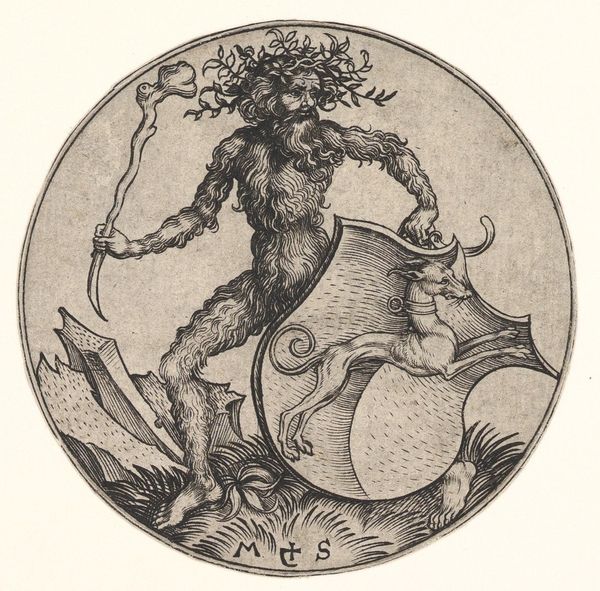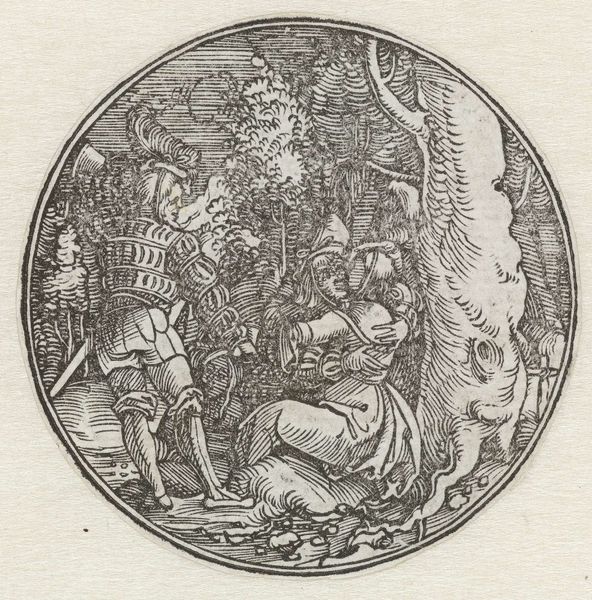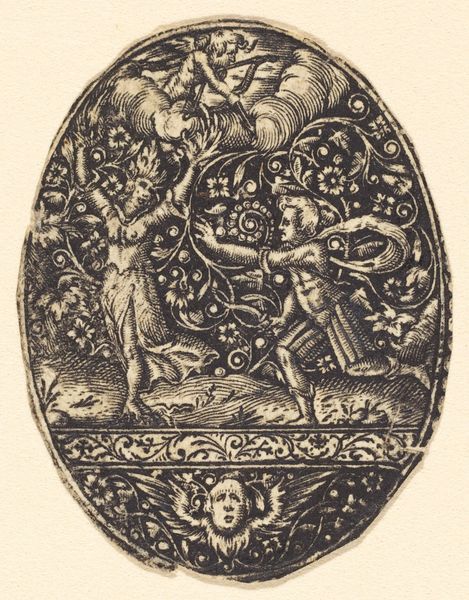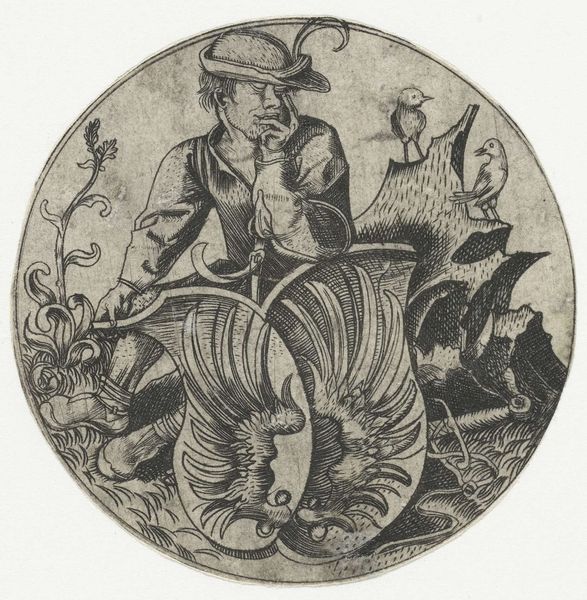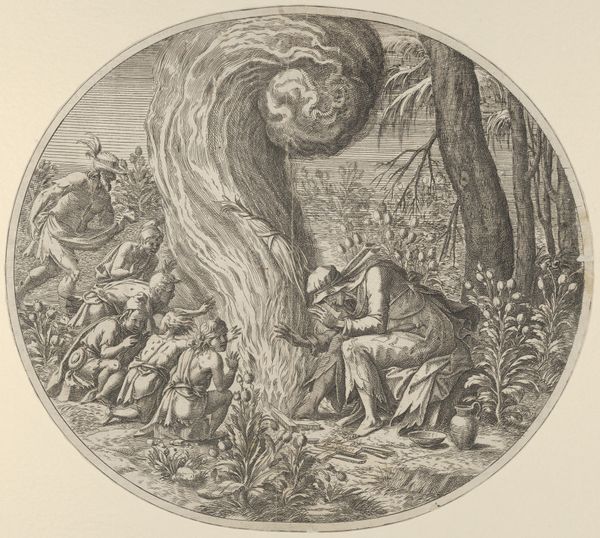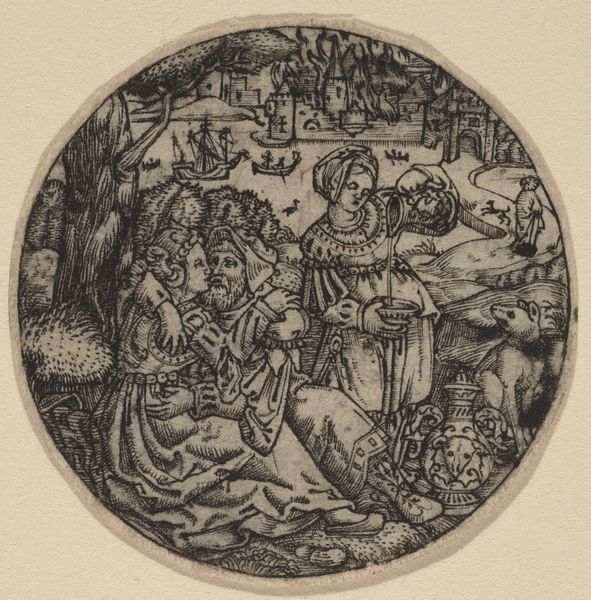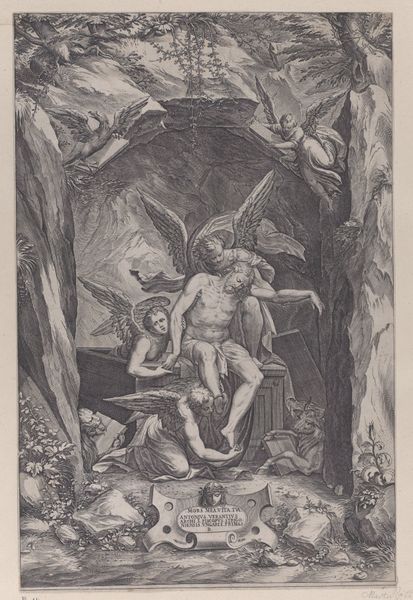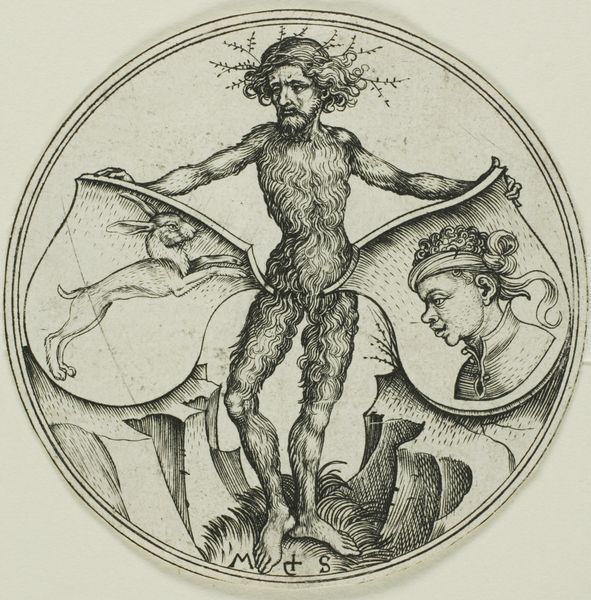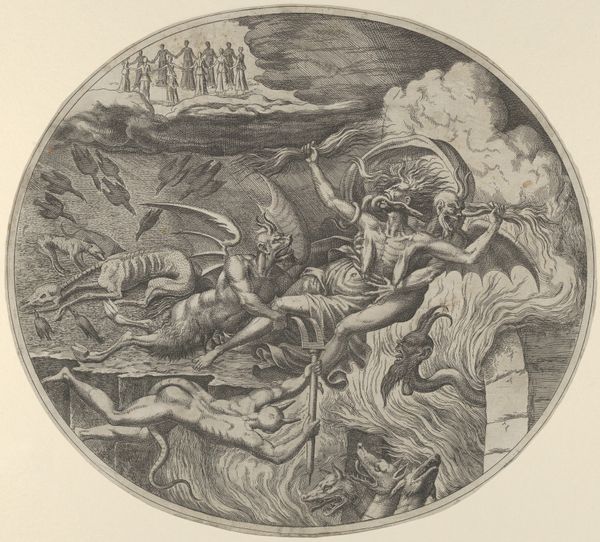
print, engraving
#
pen drawing
# print
#
landscape
#
figuration
#
line
#
history-painting
#
northern-renaissance
#
engraving
Copyright: Rijks Museum: Open Domain
Curator: What strikes me first is the contrast, the light radiating around the figure, in such a dark, wild setting. Editor: This engraving, "Saint Jerome in the Wilderness," dates from somewhere between 1475 and 1500, location here at the Rijksmuseum, and while its creator remains a mystery, the hand hints at someone from the circle of Albrecht Dürer. The scene depicts Saint Jerome, of course, a Doctor of the Church, in a moment of isolated reflection, possibly repentance. Curator: Repentance, maybe. Or is it defiance? That light feels... theatrical, almost aggressively present against the dense crosshatching of the landscape. And then there's that lion, just lounging there! I wonder what it’s thinking? Editor: Lions are, quite famously, associated with St. Jerome. Legend says he removed a thorn from a lion's paw, and the lion remained his loyal companion. Symbolically, it speaks to Jerome's command over base instincts, his ability to tame the wildness within. Think about what the desert itself represents—spiritual testing. Curator: I get that, I really do. But the composition feels… off. Like a stage set that's just a little too obviously arranged. The cross jammed to one side, the meticulously shaded drapery. It's almost unsettlingly neat for a wilderness experience. Is this real wilderness, or just a painter's idea of it? Editor: Perhaps the "realness" wasn’t the point. The northern renaissance was preoccupied with symbolic communication; this composition emphasizes particular ideas about penance, scholarly devotion and man’s dominion, which St. Jerome represented. What strikes you as most significant? Curator: Oh, the lion. Definitely. It's the only thing in the whole scene that seems genuinely unconcerned with theological arguments, entirely, unpretentiously present. The image would sing more with two or three lions instead of one. I like that more as I speak it. Editor: I suppose for me, it's the persistence of symbols, of visual language to encode meaning and continue our interpretations, all stemming from the choices the artists made to bring the ideas alive. The artist’s message survives within. Curator: Right, exactly. So much to unpack! And yet it all started with some ink, a plate, and one chill lion in the wilderness.
Comments
No comments
Be the first to comment and join the conversation on the ultimate creative platform.
